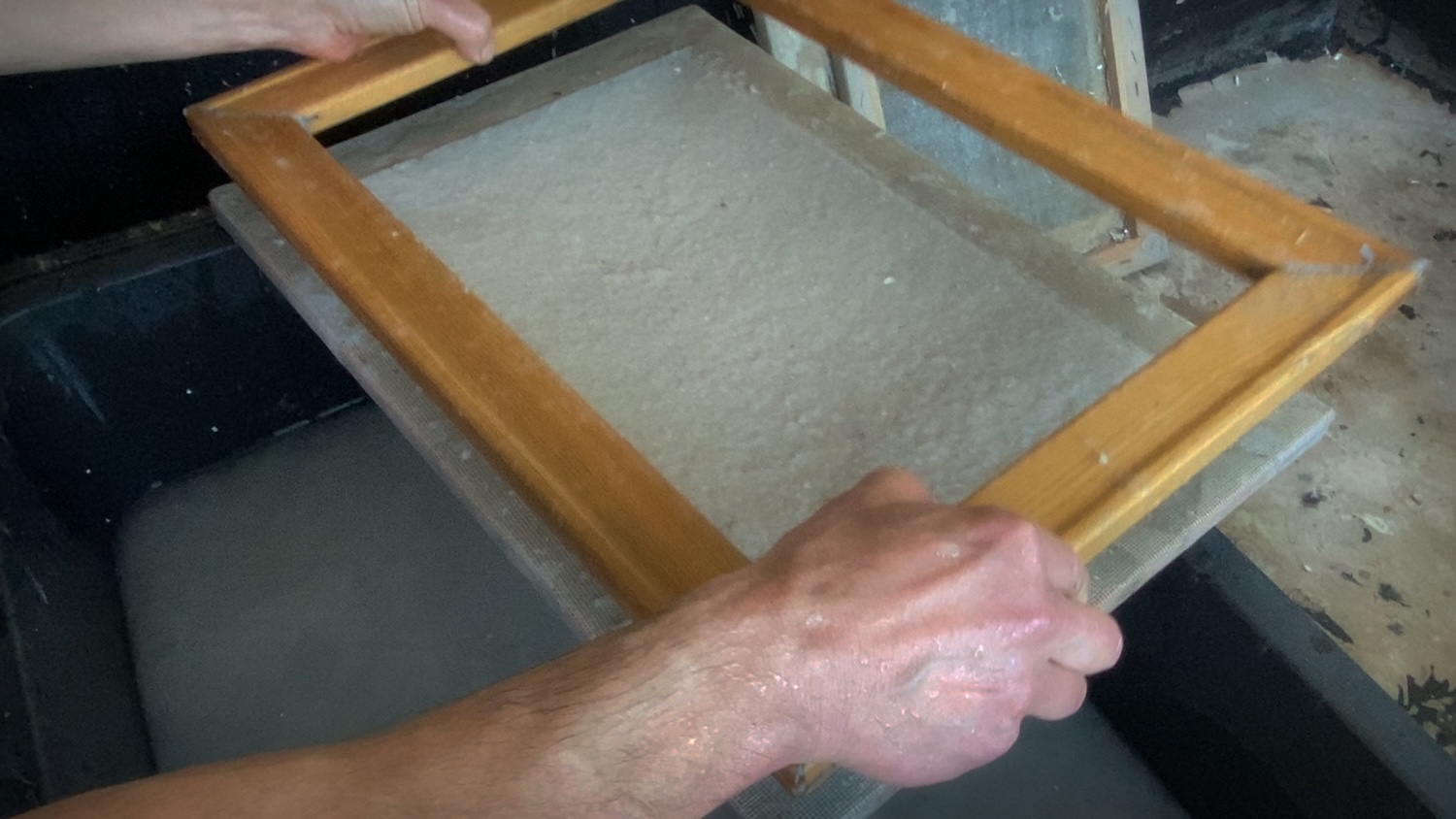Have you ever wondered how the stunning paper textures in Rebelle are created? Are they just scanned from real paper? Or designed digitally by graphic designers? Actually — neither! True to our philosophy of blending tradition with innovation, even the papers follow an authentic approach. That’s right, Rebelle papers are made manually, entirely from scratch!
The time has finally come to reveal the secret behind how we create the unique papers for Rebelle. We visited our colleague Ľubomír Zabadal at the Constantine the Philosopher University in Nitra, where he and his colleague Martin Kratochvil walked us through the fascinating process of producing and crafting cold-pressed and hot-pressed papers, felt surfaces, and canvas, all made with incredible care and artistry.
In this special behind-the-scenes video, we’ll show you how our team makes textures from scratch, and how they eventually become the beautifully detailed papers you use in Rebelle.
Crafting Cold-Pressed and Hot-Pressed Paper
When we create new paper textures for Rebelle, everything starts with simple materials, often from recycled sources. For example, to make our cold-pressed typography paper, we tear pages from old books, shred them, and soak the pieces in water. Then, we blend them into a pulp and pour the mixture into clean water to get just the right consistency.
Using a mould and deckle, we scoop up the pulp, letting the water drain through until the surface is smooth and even. This becomes the base of our cold-pressed paper. Once pressed onto a dry surface, we gently sponge out moisture. Depending on the mould or texture layer we use, the paper takes on a unique, tactile surface pattern.
Lifting the paper from the mould is the trickiest step - do it too soon, and it tears; too late, and it overdries. Timing is everything. Once set, we dry and press it: flattening it without heat for cold-pressed paper, or ironing it with heat for the silky-smooth hot-pressed finish.
Crafting Felt Surface
Making felt paper is a creative adventure in itself. We start by layering wool fibers in alternating directions, then pour warm water over them and cover the surface with soft fabric. A gentle rub with soap helps the fibers lock together into a flat sheet. A process that takes skill, patience, and plenty of practice.

As the fibers bond, we squeeze out water and reveal a beautiful, soft felt surface. And if we go for a rougher texture? That means more elbow grease! Pressing harder gives the final felt its distinctive natural bumps and organic character.
Crafting Canvas
Our canvases begin as raw linen or cotton, coated with tinted acrylic primer. And sometimes even unexpected materials! We mix in unique ingredients like asphalt, chili flakes, or spelt grains to create rich, organic textures full of depth and personality.

Every brushstroke used to coat the surface adds subtle variation, shape, and rhythm, resulting in a truly one-of-a-kind canvas texture perfect for painting.

High-End Scanning: Capturing Every Fiber
Once the papers are ready, they enter the digital realm. We scan more copies of the same paper using a high-end art reproduction scanner, the same kind used for museum-grade imaging. It takes up to 45 minutes just to warm up, and scanning a single sheet can take between 20 and 40 minutes.
From dozens of handmade samples, we pick the three most beautiful ones, scan them all, and select the ultimate winner - the one paper that becomes the digital paper you’ll find in Rebelle.
Post-Processing: From Real Texture to Digital Perfection
After scanning, we meticulously clean and prepare each texture: we remove visible seams, balance lighting, and ensure that the surface tiles seamlessly inside Rebelle. Each edge is refined by hand to preserve natural deckling while maintaining the required digital format.

We then fine-tune surface friction, a hidden but crucial part of Rebelle’s realism, so that every brushstroke feels authentic and natural.
Creating the NanoPixel Detail Map
To make Rebelle’s realism shine, each paper also includes its own NanoPixel detail map. This is the ultra-fine texture that appears when you zoom into the paper. We create it by photographing the real paper under a microscope, adjusting brightness and contrast to capture every fiber, and combining the results into an HDR texture full of microscopic detail. Once complete, we test the paper directly inside Rebelle and tweak it until it feels perfect under the painting brush.

From Our Studio to Your Canvas
After all that work — the crafting, scanning, editing, and testing — the paper is finally ready for you! Every stroke you make in Rebelle carries the soul of real, handmade material beneath it, shaped by artists, refined by developers, and brought to life by you. That’s where the next chapter of its story begins: the most creative one, in your hands. :)
From the standard Cold Pressed or Japanese Washi papers to a collection of linen canvases, lithography stones, or wood veneer, these extraordinary textures give you countless opportunities to experiment with different media and painting techniques. All art surfaces use NanoPixel technology, providing infinite details and realistic textures like never before.
Explore Rebelle papers directly in Rebelle 8. Each individual surface is available for $3.99 and comes with unlimited use, allowing you to reuse papers endlessly across any number of projects. Not only does this give you complete creative freedom, but it also lets you save on art supplies over time, no more running out of materials in the middle of your inspiration. :)
Happy painting!
Escape Motions Team



